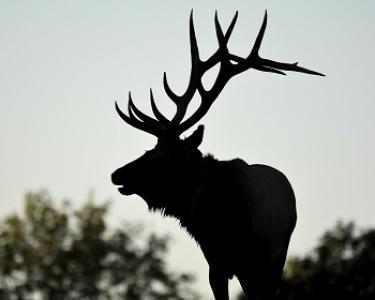How and when to see elk?
Are there elk in your woodland? The following are some telltale signs that elk are present.
- Tracks: Elk tracks are similar to deer–looking something like an upside down heart with a hollow middle–but elk tracks are considerably larger.
- Forage pits: In winter look for pits dug in snow where elk have been rummaging for food.
- Trails: Look for trails of migrating elk, often several animals wide and well worn due to their weight.
- Wallow sites: Bull elk create bathtub sized depressions in the ground that they urinate in, muddy up, and then roll around in to cover their bodies with scent. The scent is used to attract breeding females, who will sometimes roll in the wallows to indicate their willingness to mate. The smell alone, a strong musky odor, is often enough for humans to detect elk presence, but wallows will also have fresh hoof prints and are often found near water.
- Rubbing sites: If you see mangled shrubs and small trees, with shredded bark and broken branches, it may be the site of an elk rubbing. When bulls have finished growing their antlers for the season, the velvet covering starts to shred and fall off. Elk will often rub them against shrubs and trees to remove the remaining velvet. Rubbing sites also post a message for other males and breeding females meaning–I’m ready!
- Gnawed aspen: Look for signs of elk browsing in aspen groves, as well as other deciduous trees.
Wildlife note: Once a wallow is abandoned by elk, it often fills with water and can become a small ephemeral wetland pool and breeding site for frogs and salamanders.
How to find your woodland elk
Elk are most active at dawn and dusk. Find a place of good elk forage before dawn or dusk and wait–very quiet and still. Elk have a keen sense of smell, so if you would like to observe them behaving naturally, it is best to be downwind. This is essential in an area where elk are hunted, as they will be much more wary of people.
Fall is a great time for elk observation because bulls are very active and usually engrossed in their breeding antics. But don’t get too close, they can be aggressive during breeding season.
How can I get more tips?
It’s simple! Enter your email below.

